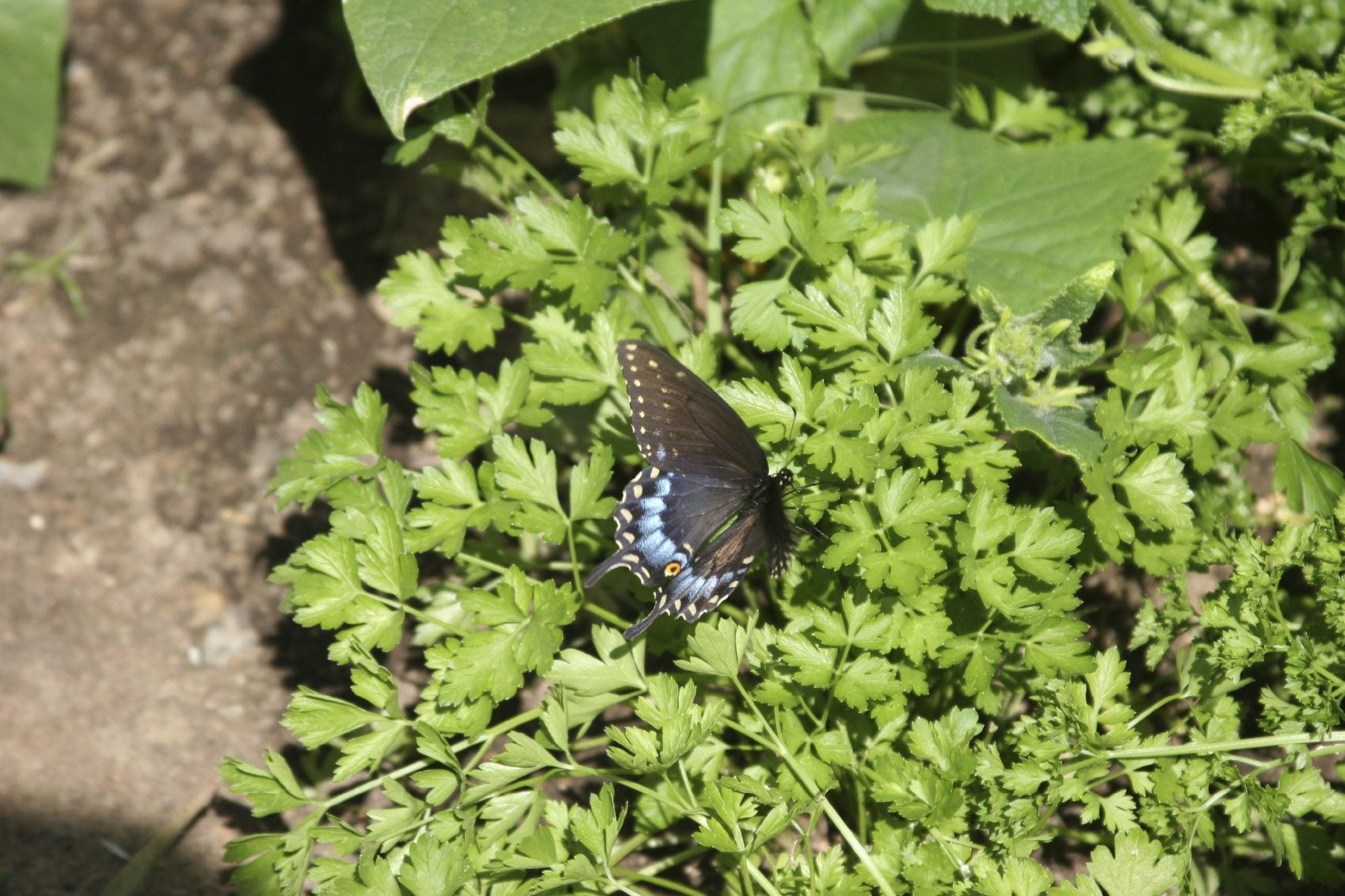Using Parsley For Butterflies: How To Attract Black Swallowtail Butterflies


My parsley is attracting butterflies; what’s going on? Parsley is a familiar herb that makes an attractive garnish or provides a bit of flavor and nutrition to soups and other dishes. Parsley is easy to grow and the ruffled leaves add beauty and interest to the herb garden. This is probably old news, but what you may not know is that parsley is a butterfly-friendly plant, and is especially beneficial for attracting black swallowtails, anise swallowtails, and others. Read on to learn about parsley attracting butterflies and tips for growing parsley for butterflies.
Eastern Black Swallowtail on Parsley
Parsley is suitable for growing as a perennial in USDA plant hardiness zones 4 through 9. By planting parsley, you’re doing a huge favor for eastern black swallowtail butterflies, as this species feeds only on a few plants, including:
Providing parsley for butterflies can create a home for a native population that you can observe throughout their lifetime. Eastern black swallowtails, appreciated for their delicate beauty, are recognizable by their black wings, each marked with two rows of bright yellow spots, which are larger and brighter in males. The spots are divided by powdery blue markings, which are more pronounced in females.
Growing Parsley for Butterflies
Although parsley grows in a variety of conditions, it performs best in full sunlight and relatively rich, well-drained soil. Plant seeds directly in the garden after all danger of frost has passed in spring, or start them indoors six to eight weeks before the last average frost date in your area. Cover the seeds with about 1/8 inch (3 mm.) of soil or fine sand. Keep the soil slightly moist until the seeds germinate (be patient, as germination may be slow). Thereafter, water the plants deeply once a week. Thin the seedlings to a distance of 10 to 12 inches (25-31 cm.) between each plant when the seedlings are 2 to 3 inches (5-8 cm.) tall.
How to Attract Black Swallowtail Butterflies
If you’re serious about attracting black swallowtails and other butterflies to your garden, here are a few tips that will help.
- Avoid insecticides and other chemicals.
- Arrange a few flat stones in your garden. Butterflies need a place to rest and bask in the warmth of the sun.
- Place a tray of wet sand near your herb garden. Butterflies use the damp sand for extracting minerals and drinking water. Remember to keep the sand moist.
Will Caterpillars on Parsley Hurt Plants?
If you want to attract black swallowtails, don’t destroy the beautiful, brightly striped caterpillars! The butterflies lay their eggs on the parsley plants, which hatch into caterpillars. The caterpillars munch on leaves before pupating and creating a chrysalis. When the cocoon matures, it splits and releases a beautiful black swallowtail butterfly. The butterfly depends on the plant, but the plant won’t suffer.
Sign up for the Gardening Know How newsletter today and receive a free copy of our e-book "How to Grow Delicious Tomatoes".

A Credentialed Garden Writer, Mary H. Dyer was with Gardening Know How in the very beginning, publishing articles as early as 2007.